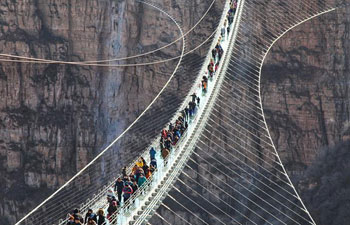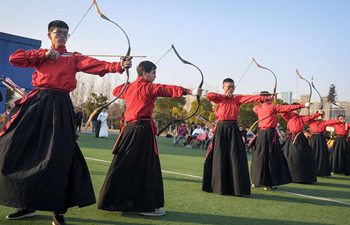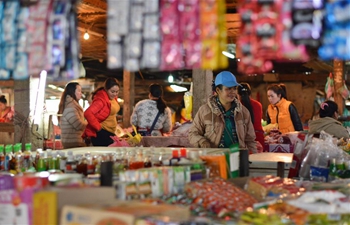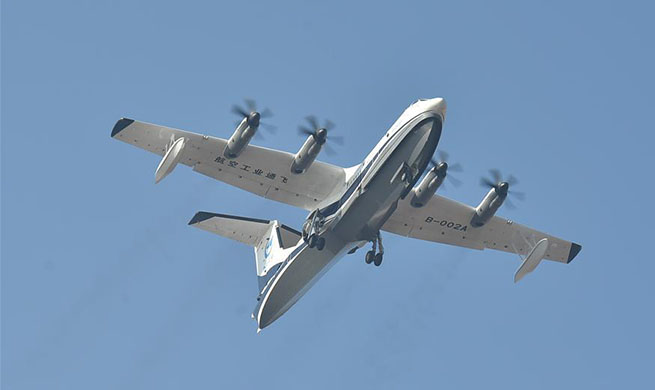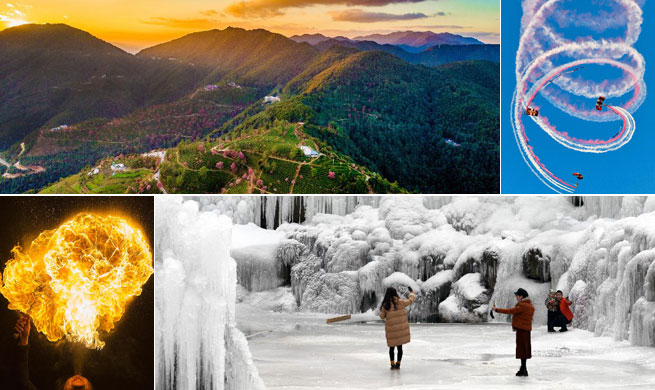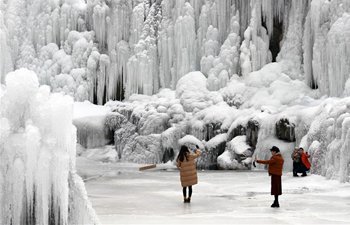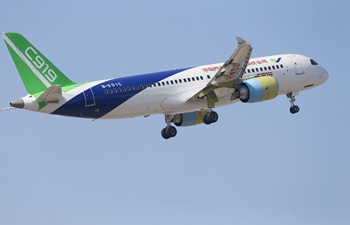by Xinhua Writer Qu Junya
BEIJING, Dec. 25 (Xinhua) -- The year 2017 has seen the overland Silk Road Economic Belt and the 21st Century Maritime Silk Road reach more peoples and more lands.
The year may mark a milestone in materializing the Belt and Road Initiative. Both a vision and a solution from Chinese wisdom valuing peace and harmony, the Initiative seeks common prosperity and safeguards globalization amid uncertainties and challenges such as a surge in protectionism, nationalism and isolationism in Western countries.
"China is an inspiring example for many countries," said Andrei Vinogradov, a political expert with the Russian Academy of Sciences. "Its success and historical experience make it possible to provide the world with a solution based on win-win cooperation."
BROADENING CONSENSUS
Four years after it was put forward by Chinese President Xi Jinping, the Initiative has blended well with the respective development strategies of participating countries.
For example, in mid-March, the United Nations resolution on Afghanistan highlighted the Chinese plan as key to rebuilding the war-ravaged country and boosting regional integration.
The Initiative aims to expand infrastructure, trade and investment networks to connect Asia, Europe and Africa along and beyond ancient Silk Road routes.
Furthermore, the Belt and Road is set to lead the world toward "a common community of a shared future for humankind," another vision devised by China out of its responsibility to respond to changes in the global landscape, and inscribed in multiple UN resolutions.
The Initiative well serves the UN 2030 Agenda for Sustainable Development, according to UN Secretary-General Antonio Guterres. In a message to a November forum in New Zealand, Guterres noted "clear synergies" between them.
Both strive to "stitch countries together in networks of trade and mutual gain," and aim to "deepen global connectivity," he said.
The Initiative has in the past year responded to more calls for openness, inclusiveness, innovative growth, and freer and fairer trade at multilateral forums such as the World Economic Forum, G20 summit and BRICS summit. It has pushed for more partnerships and is lauded as a welcomed public good.
Its prospect charmed over 1,500 representatives from over 130 countries and 70 international organizations and effected the signing of close to 70 agreements at the Belt and Road Forum for International Cooperation held in Beijing in May, a milestone marking a new implementation phase for the Initiative.
With policy support from the Chinese leadership on top of confidence built on China's steady growth, the Initiative has this year convinced more onlookers and skeptics than ever before. Notably, in November over 250 Japanese business leaders showed interest in playing a role in the Initiative's grand narrative.
The infrastructure plan received a vote of confidence in December when the Asian Infrastructure Investment Bank (AIIB), a major source of funding for the Initiative, expanded in less than two years to a broader geographical area represented by 84 member countries and regions, up from its founding 57.
"The Belt and Road offers new opportunities for development and the billions of people in areas it touches," said deputy speaker of the Czech parliament Vojtech Filip during a December visit to Beijing.
MORE PROJECTS
An increasing number of economic corridors, railways, highways, ports and power plants, among others, are being mapped out on paper while substantiated on the ground along the Belt and Road.
The collaboration is based on extensive consultation with participating countries, who see the project as a means to boost economic growth.
Under the Initiative, Chinese enterprises have invested roughly 50 billion U.S. dollars and helped build 75 economic and trade cooperation zones in 24 countries, generating over 209,000 jobs, according to official data.
It plays a significant role in Australia in the development of its north, former Australian trade minister Andrew Robb said.
It helps lay "one of the key cornerstones to Kenya's journey of transformation into an industrial, prosperous and middle-income country," said Kenyan President Uhuru Kenyatta during the launch of the passenger train service of the 472-km Mombasa-Nairobi Standard Gauge Railway (SGR) in May. The railway is the African country's single largest infrastructure project since its independence in 1963.
In land-locked Laos, a railway under construction will make it land-linked.
Railways built with Chinese expertise elsewhere will connect cities in and out of Thailand, Serbia, Hungary and other countries, while putting local development on a faster track, or simply bringing faster and easier travels to everyday life, not to mention jobs with better pay.
In parallel with the progress on land, most recently in December the operation of the port of Jambantota in Sri Lanka was launched enabling it to join other hubs along the Belt and Road, including Piraeus in Greece and Gwadar in Pakistan.
Not even the Arctic is left out. Russia and China in July agreed to find a shortcut between the Pacific and the Atlantic through the frigid north. Annual global freight costs could be cut by 50 billion to 120 billion dollars.
The Silk Road on Ice via the Arctic is widely seen as the third arch of the Belt and Road, adding another sea route to ones starting from the South China Sea, to the Indian Ocean, Africa and the Mediterranean, and to the South Pacific and Oceania. (Xinhua reporters Yang Dingdu, Feng Wuyong and Chen Jing contributed to the story.)







